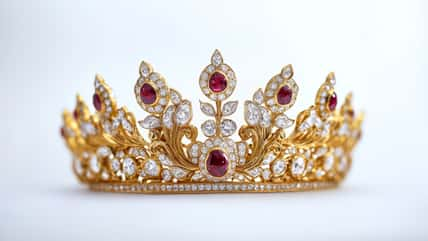She’s Called The First Lady Of Physics, And She Was Invited To Work On The Manhattan Project

Did you know that there was a woman who was considered to be the ‘First Lady of Physics?’
Her name was Dr. Chien-Shiung Wu, and she was a remarkable physicist who worked on developing the atomic bomb and changed our understanding of physics through her research on the law of conservation of parity.
Chien-Shiung was born in 1912 in Liuhe, China. Her father was an engineer who encouraged her to pursue a higher education which wasn’t very common for women in China at the time.
After graduating from National Central University with a degree in physics in 1934, Chien-Shiung moved to the United States to get her Ph.D. at the University of California, Berkeley.
There, she met her husband, physicist Luke Chia-Lu Yuan, and they got married in 1942 after she received her Ph.D. in 1940. They moved to the East Coast to begin their careers, and Chien-Shiung started experiencing the racial discrimination that arose during World War II.
She eventually got a job teaching physics at Smith College and then became one of the first female professors in the physics department at Princeton University. In 1944, she was invited to work on the Manhattan Project at Columbia University, where scientists were developing the atomic bomb.
Chien-Shiung’s contributions to the Manhattan Project were enormous, as her work with gaseous diffusion helped produce the large uranium quantities needed to build the atomic bomb.
When the war ended, Chien-Shiung began receiving recognition for her work and became the first woman to become a tenured faculty member in Columbia University’s physics department.
After becoming a United States citizen in 1954, Chien-Shiung was approached by theoretical physicists Tsung Dao Lee and Chen Ning Yang to assist them in their research on the law of conservation. She made a fundamental discovery through research and experiments, which proved there was no evidence of the law of conservation and changed the way physicists work today.

Tryfonov – stock.adobe.com – illustrative purposes only
Unfortunately, due to the misogyny Chien-Shiung so often faced in her career, Tsung Dao Lee and Chen Ning Yang went on to receive the Nobel Prize in Physics and were celebrated in the science community while she was cast aside.
In the 1960s, Chien-Shiung began publicly speaking out and demanded more recognition for women in the science world as she continued to work at Columbia University. Eventually, her work was so outstanding that she could no longer be overlooked, and she started to receive some big honors and awards.
For instance, she won the National Academy of Sciences Cyrus B. Comstock Award in Physics in 1964 and the National Medal of Science in 1975.
Chien-Shiung retired from teaching at Columbia University in 1981 but continued to advocate for women in S.T.E.M. by inspiring young girls through educational programs. She passed away at her home in New York in 1997 at 84. Despite the hardships she faced, she was a truly amazing and determined woman.
If true crime defines your free time, this is for you: join Chip Chick’s True Crime Tribe
In 2004, This 22-Year-Old College Student Vanished After Meeting A Man At A Party
Brighten Up Your Patio By Growing Roses In Containers, And Here’s How You Can Get Started
Sign up for Chip Chick’s newsletter and get stories like this delivered to your inbox.
More About:Chicks We Love





